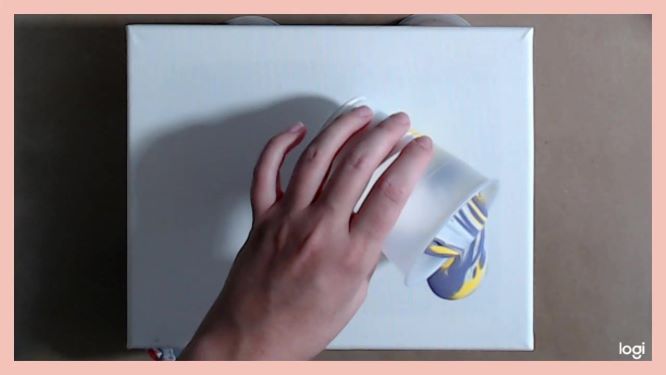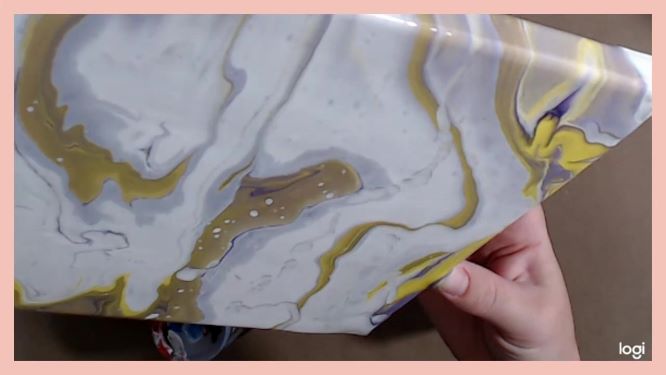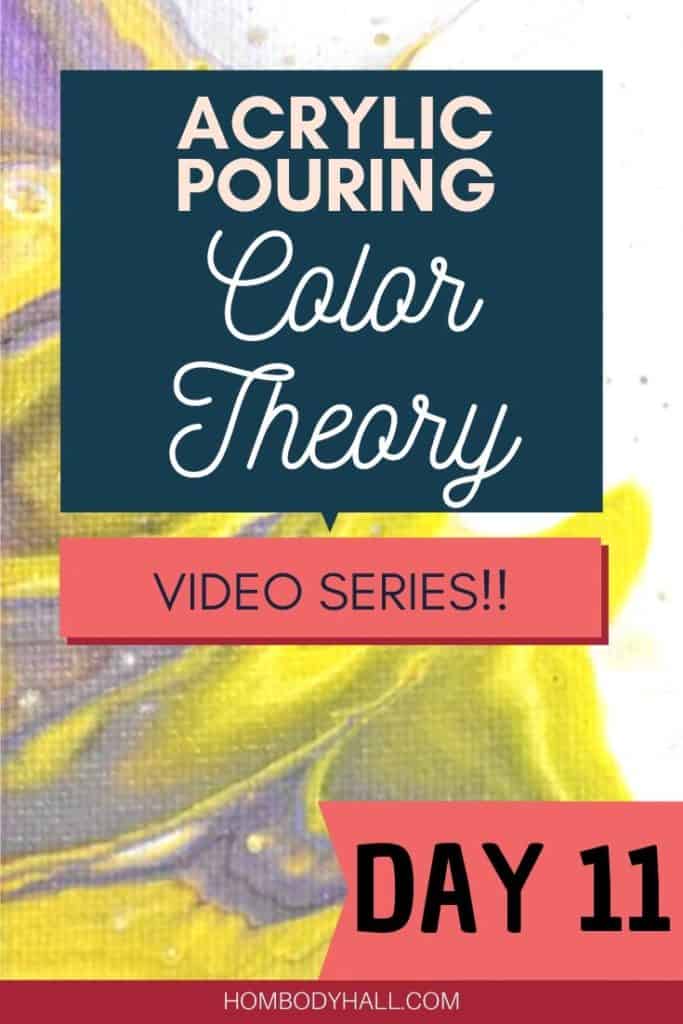Day 11 of my acrylic pouring color theory series is a high contrast dirty pour painting with a complementary scheme of yellow and shades of violet on a background of white.
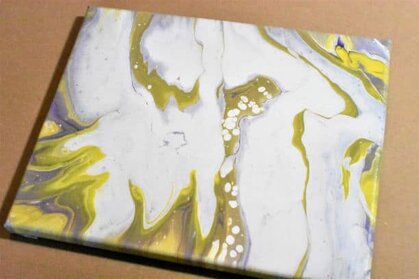
What is a dirty pour painting?
Also known as an open-cup pour or a ribbon pour, a dirty pour is where you pour different colors of paint into the same cup and pour them out onto the canvas.
Ready for the Basics?
If you’re curious about colors and color theory as it relates to acrylic pouring, head on over to my post about Choosing Colors for Acrylic Pouring and grab your FREE printable Color Wheel and Color Scheme Guides.
If you would like to follow along with my 30-day acrylic pouring color theory video series, grab your very own color wheel and color scheme guides and some paint, and head on over to the color theory section of Homebody Hall!
If you’re pouring for the first time and would like more explanation on materials, processes, and terms, you can head on over to my Beginner’s Guide to Acrylic Pouring. You can also head over to my Comprehensive Guide to Acrylic Pouring Techniques for more information on all of the different techniques and my How to Thin Acrylic Paint for Acrylic Pouring post to learn all about pouring mediums!
This post contains affiliate links, which I earn a small comission from. These are provided for your convenience, and the price isn’t increased at all.
Color of the Day (Day 11 – Dirty Pour):
- Yellow
Color Scheme:
- Complementary – Yellow and Violet
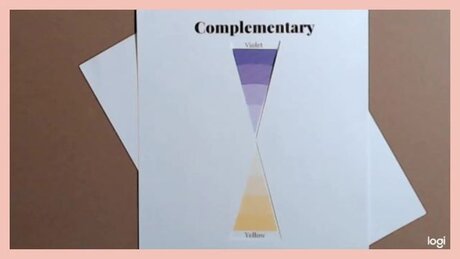
Shades Chosen:
- Light violet
- Violet
- Light yellow
- Yellow
Neutral Chosen:
- White
Technique:
- Dirty-cup pour
What materials do you need to do a dirty pour?
Paints:
All of the colors I used were mixed from the paint colors below. (Blue and magenta for violet; violet and white for light violet; yellow and white for light yellow)
I used magenta for my violet hues because I think it makes a less muddy color because there isn’t a yellow undertone to it as there is with red. So if you ever want to make a very vivid violet color, go with magenta. I have found that I actually prefer the Liquitex Basics Quinacridone Magenta to the Artist’s Loft Brilliant Magenta.
- Artist’s Loft Brilliant Blue
- Artist’s Loft Brilliant Yellow
- Artist’s Loft Deep Red
- Liquitex Basics Titanium White
- Artist’s Loft Brilliant Magenta
Pouring Medium:
- Floetrol
- Water
Canvas:
Sealant:
- Rustoleum American Accents Gloss Clear (1 thin coat)
Dirty Pour Painting Video Tutorial
How do you make a dirty pour? Step-by-step Instructions
- Layer your paints in your cup. The order I put my paints in my cup were: white, yellow, light violet, violet, white, yellow, light violet.*
- Pour your paint across the canvas.
- Tilt your canvas in different ways until you’re happy with the outcome.
*NOTE: I put the two complimentary colors right next to each other in the cup instead of using the white as the buffer, which resulted some muddying. Use this as a lesson and don’t do that.
And if you’re interested in more tips to avoiding muddy paintings, be sure to grab your FREE Printable Color Wheel and 8 Color Scheme Guides and check out my Muddy to Masterpiece course!
Go Forth and Pour!
Even though this is one of the easier pours to execute, it can produce some of the coolest results! Dirty pours are amazing for creating marbling effects and beautiful ribbons of color, so go at it! Here’s even more inspiration in a peacock-inspired color palette:
As always, check out my updates on Facebook and Instagram and feel free to peruse Homebody Hall for more fluid art tips, tricks, and tutorials! Also head over to Youtube and subscribe to get my videos sent to you as soon as they come out!!
2024 Color Palettes for Creating Updated Art
Let’s Throw a Paint Party: How to Host Your Own Paint and Sip
Do It Yourself Countertop Paint: Update Your Kitchen With Pour Paint
Want to remember this dirty pour tutorial? Pin Day 11 of this Acrylic Pouring Color Theory Series to your favorite Pinterest Board!


